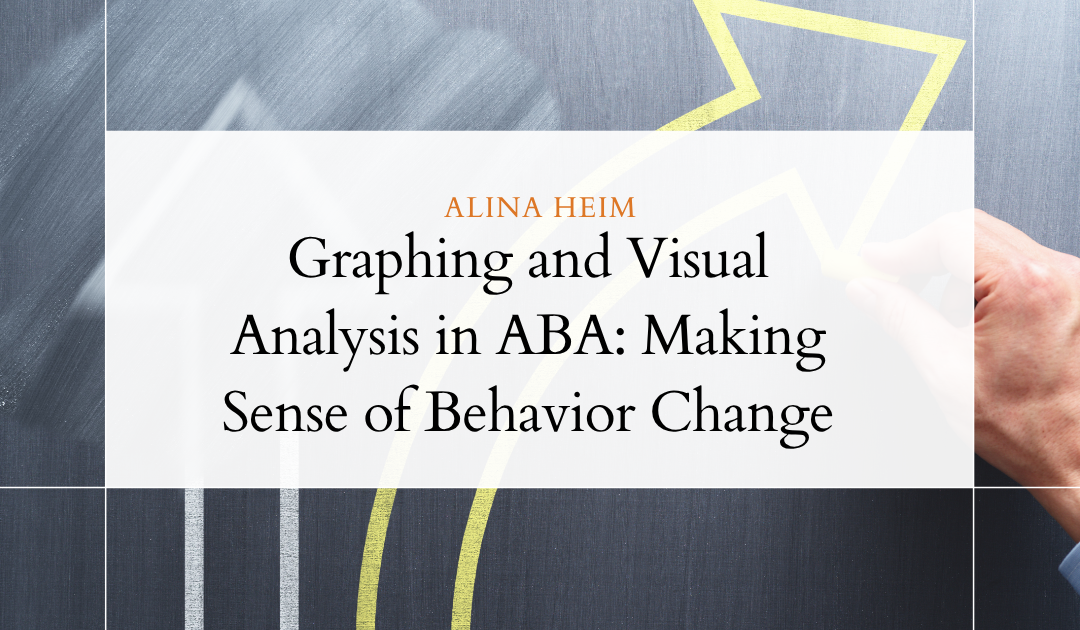Graphing is more than a visual aid in Applied Behavior Analysis (ABA)—it is a powerful tool for monitoring, analyzing, and communicating progress. Visual analysis allows practitioners to make quick, data-based decisions that can significantly impact treatment effectiveness. In this blog, we explore the role of graphing and how to use visual analysis to assess and refine behavioral interventions.
Why Graphs Matter in ABA
Graphs help behavior analysts:
- Track progress over time
- Identify trends and patterns in behavior
- Evaluate the effectiveness of interventions
- Communicate findings clearly to stakeholders (e.g., parents, teachers, funding agencies)
Visual data makes it easier to spot inconsistencies or improvements that might not be obvious in raw numerical data.
Common Types of ABA Graphs
- Line Graphs
The most commonly used type of graph in ABA, line graphs display data points over time. Each axis represents an element of behavior:
- X-axis: Time or sessions
- Y-axis: Behavior measurement (e.g., frequency, duration, latency)
- Bar Graphs
Used to compare data across different conditions, individuals, or behaviors. Bar graphs are ideal for summarizing discrete data sets or illustrating performance across skill areas. - Cumulative Records
These graphs show the total number of responses over time. The slope of the line indicates the rate of responding and is useful for evaluating behaviors like task completion. - Scatterplots
Scatterplots are used to analyze the relationship between behavior and time of day or specific settings. They help identify temporal patterns or triggers.
Elements of Effective Graphing
- Clear Labels: Each axis, condition change, and phase should be labeled.
- Phase Lines: Vertical lines indicate changes in intervention phases (e.g., baseline to treatment).
- Legends and Notes: Helpful for interpreting data, especially when multiple behaviors or settings are included.
- Consistent Formatting: Ensures ease of interpretation across sessions and team members.
Visual Analysis Techniques
Behavior analysts use specific criteria to interpret graphs:
- Level: The average value of the data points within a phase.
- Trend: The overall direction of the data (increasing, decreasing, or stable).
- Variability: The degree to which data points fluctuate within a phase.
- Immediacy of Effect: The speed of behavior change after an intervention is introduced.
- Overlap: The extent to which data points in different phases share the same range.
- Consistency: Similar trends across similar phases or behaviors.
Best Practices in Graphing
- Update graphs frequently and regularly.
- Use software or apps for accuracy and efficiency (e.g., Excel, GraphPad, ABA-specific platforms).
- Share graphs with the treatment team and use them in meetings and reports.
- Avoid overcomplicating graphs—clarity is more important than design.
Ethical Considerations
Graphs should be honest representations of the data. Avoid selective reporting or manipulation of scales to exaggerate results. Data transparency supports ethical practice and builds trust.
Conclusion
Graphing and visual analysis are indispensable tools in ABA, transforming raw data into actionable insights. By mastering graph creation and interpretation, behavior analysts can enhance the quality, clarity, and credibility of their interventions. Ultimately, well-designed graphs empower professionals and families alike to understand and support meaningful behavior change.

